Primary Arms has finally brought competition to the field glasses industry with their first foray into binoculars.
Given the low price point, I wanted to know if the primary arms SLx hunting binoculars could prove affordable optics, fruitful for the strict budget.
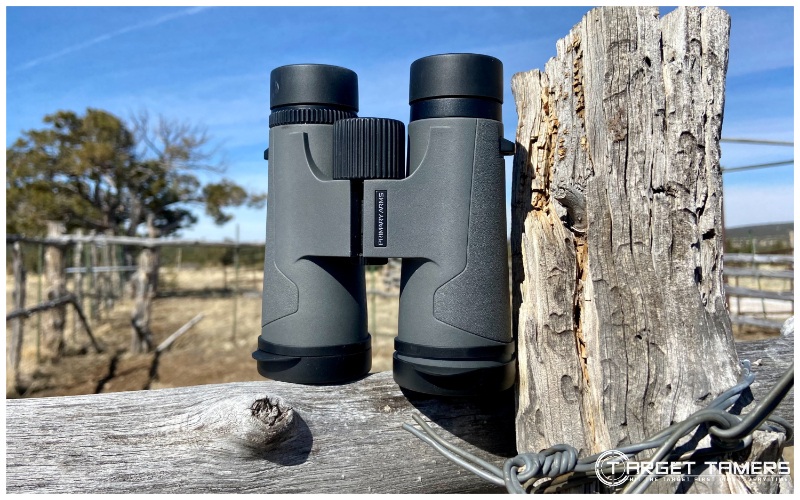
I tested for optical and build quality, the focusing and diopter mechanisms, tripod mounting, and use in various environments to complete my Primary Arms SLx 10x42mm binoculars review.
I reveal the pros and cons from my field experience as well as how it compares to the new Primary Arms GLx 10x42 ED binoculars.
Quick Overview...
What I Like: Optical quality
What I Don’t Like: Eye relief for glasses
Best Uses: Recreational Use, Hunting, Bird Watching, Wildlife Observation, Hiking, Sightseeing, Limited Range Use (Target Shooting),
- Magnification: 10x
- Objective Diameter: 42mm
- Coatings: FMC
- FOV: 309 ft/1000 yds
- Eye Relief: 16 mm
- Dimensions: 5.6 x 5 x 2”/20.7 oz
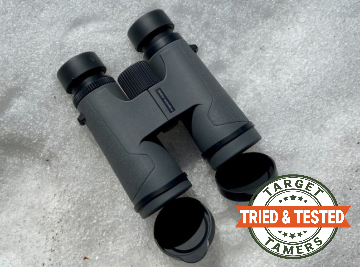
My Verdict: Overall, the Primary Arms SLx 10x42 binoculars offer stunning optical performance for its low price point, and I don’t mean that lightly. The glass quality is exceptional and exceeded my expectations for cost. They’re rugged, easy to use, and easy to be pleased with.
Why Trust Me?
After hundreds of hours of hand-testing binoculars in the field and on the hunt, and thousands more hours researching, writing, photographing and creating videos about them, I feel I have earned the title of expert when it comes to optics!
Optics are not just my passion, but also my full-time job!
I get my hands on as many of the optics I test as possible (through buying, borrowing or begging!) and run them through their paces to make sure they will perform out in field.
Check out our optics testing process here.
Over a decade of experience birdwatching, wildlife observation and hunting has been integral in putting together this Primary Arms SLx 10x42 review.
Who is the Primary Arms SLx 10x42 Best Suited to?
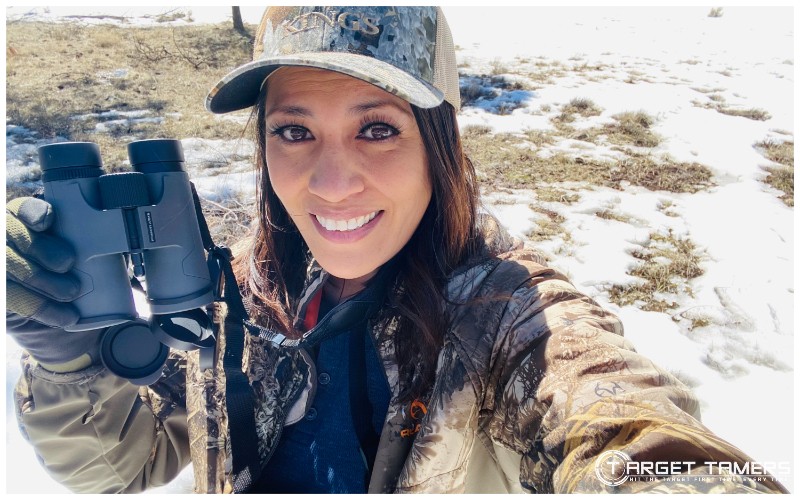
For the money, the PA binoculars are one of the best binoculars under $150 that I’ve ever used in the field.
It’s fairly accurate to say that maybe five years ago, optical quality like this would easily set the SLx in the $200-$300 binoculars price range. These days, this level of quality and performance benchmark is under $200. But, I would say the SLx could go head-to-head with some of the $200+ ones too.
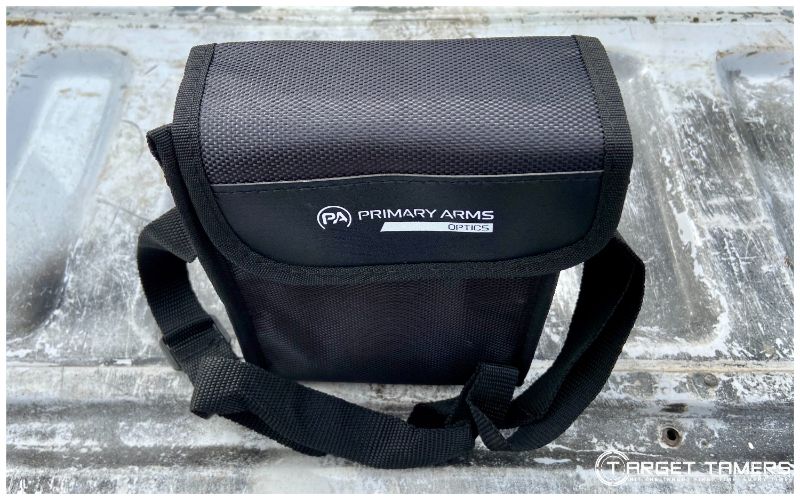
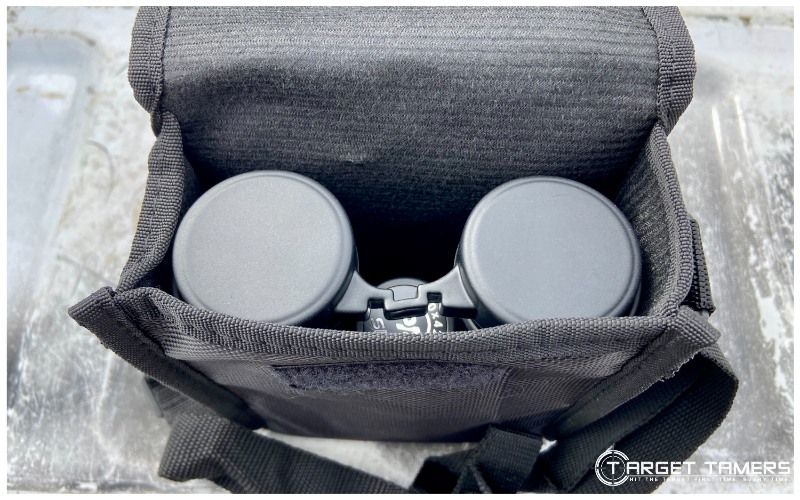
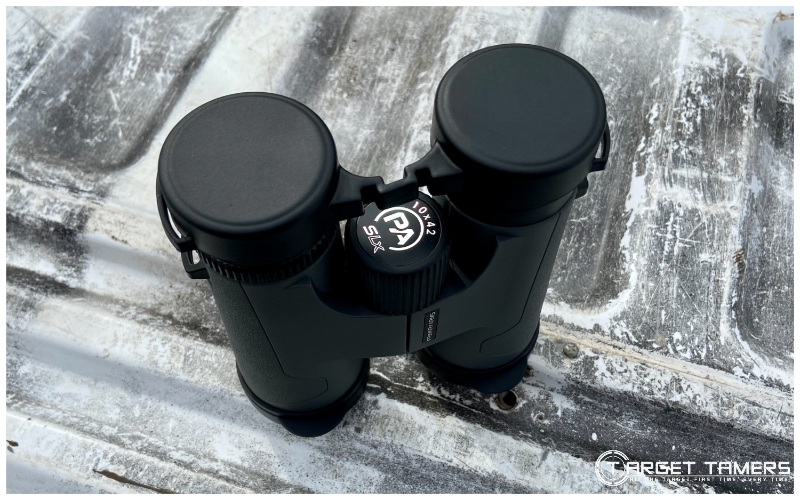
The primary attractants of the SLx binoculars are the optics, ruggedness, and of course cost. If the budget dictates that a bird watcher, hiker, or hunter must seek out the best budget-friendly binocular, the SLx fits the bill. Even without ED glass, the SLx optics are excellent and will set the standard for binoculars under $150 going forward.
How Does the Primary Arms SLx 10x42 Perform?
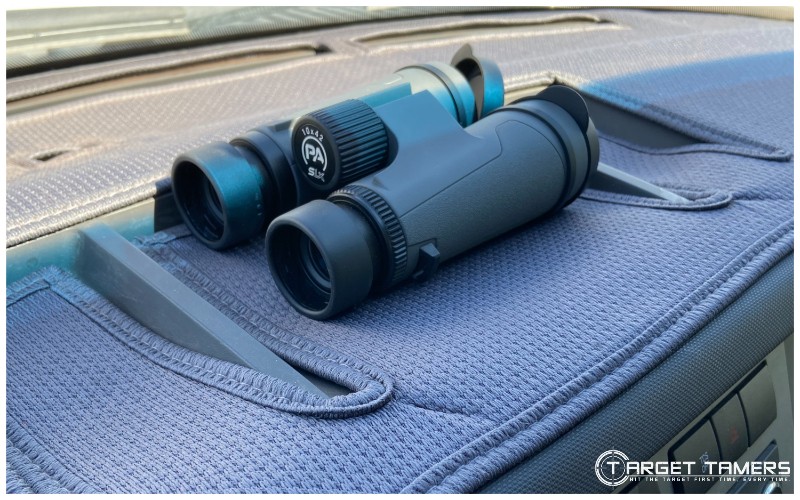
In total, I think the PA SLx binoculars have fantastic optics and build quality. Actually, my favorite feature is the optics and I’m floored by the on-axis sharpness, lack of color bloating, and good contrast for non-ED glass and for what the binoculars cost.
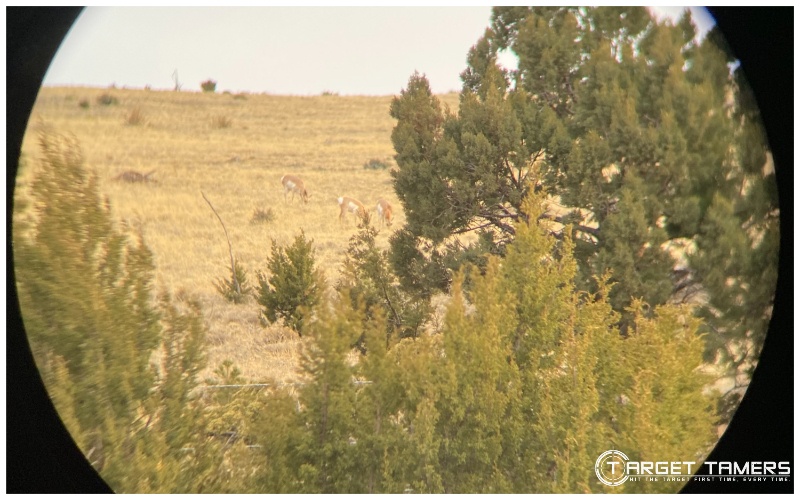
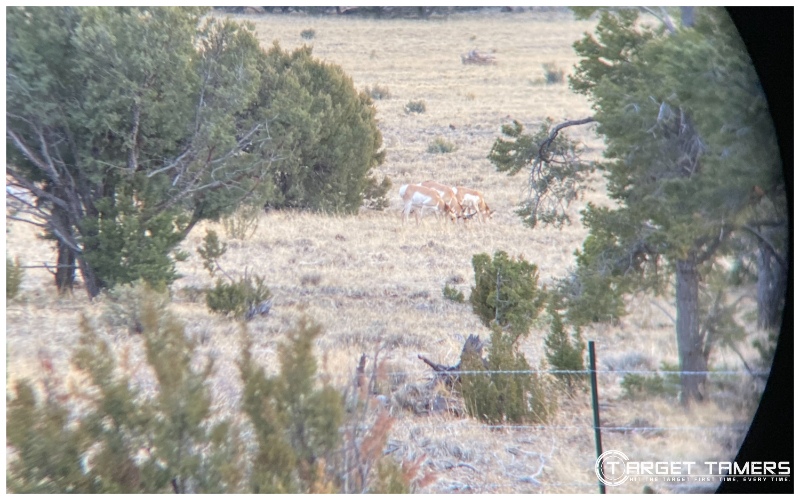
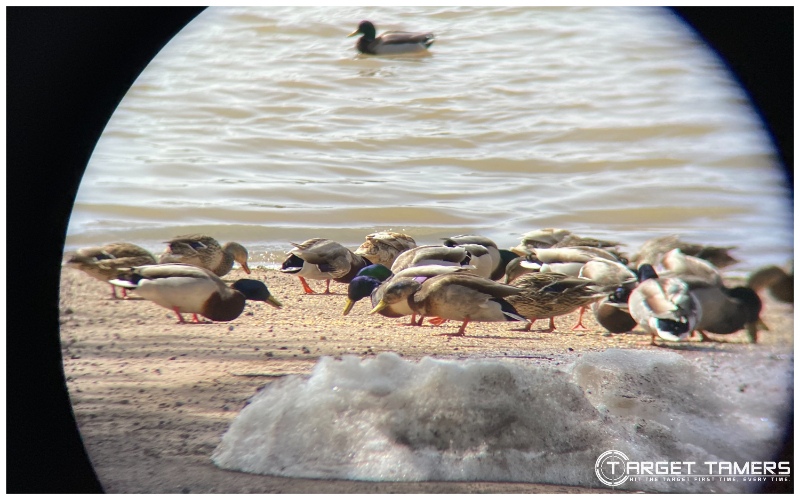
Taking to the field, I was able to capture a lone prairie dog from 50 or so yards, antelope in the distance, and observe various birds.
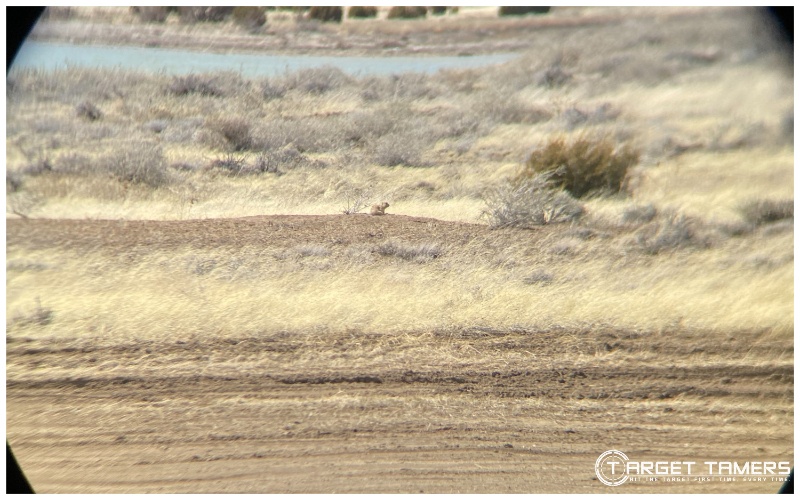


This little guy was chirping away to coax his dog buddy out of the hole. The next day, another friend was waiting at a nearby hole for 4-legged friends.



Observing ducks and random pigeons among the flock was a very rewarding experience, and you can see the color rendition is amazing.
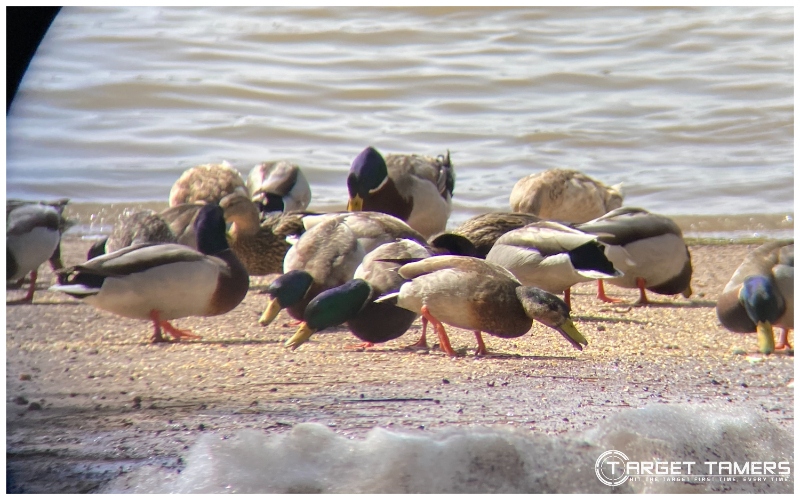
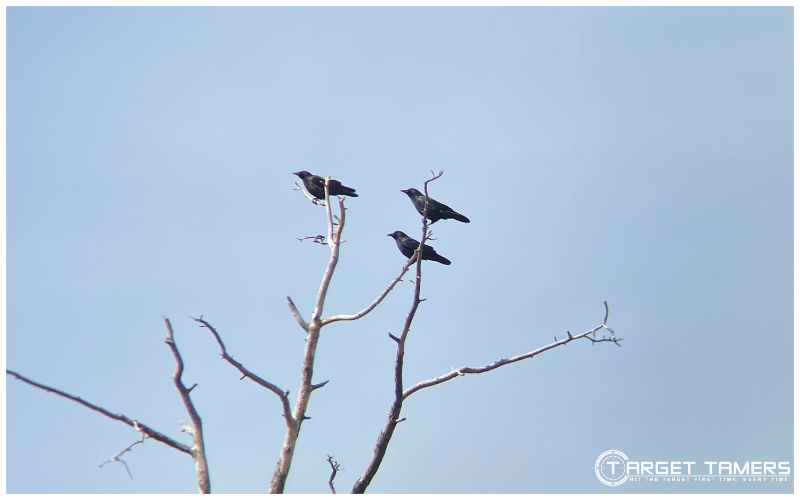

I also took some .22 cal groupings to a spot and glassed them with the SLx binoculars. Though digiscoping doesn’t do it justice, I could clearly see the shoot ‘n see holes, those on black were visible, but it was difficult to see holes on white. The targets were set up at about 50 yards or so.
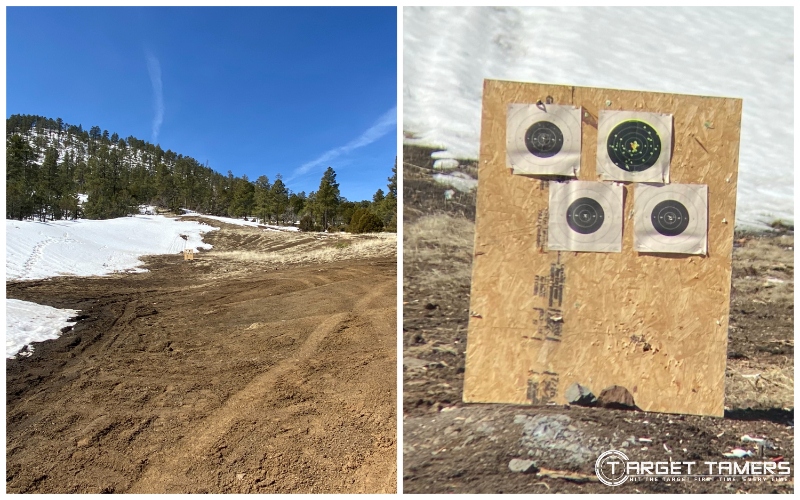
Though I prefer to have lower magnification when I’m in the woods, I really need that 10x to support looking for tracks in the snow and to spot rubbings at a distance, or when I especially hit glassable areas.
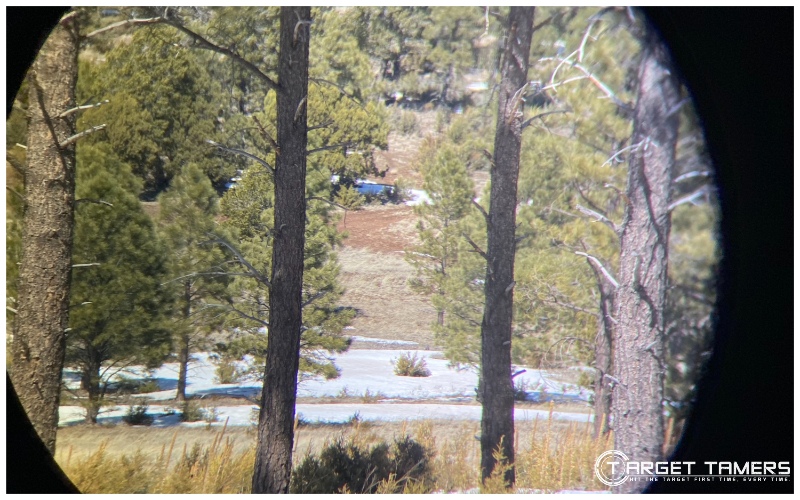


As a tripod adaptable binocular, I set them up without issue. You have the stability of using a tripod, but I didn’t really need to do this. They’re a copybook pair as a handheld optic and there’s a good balance between weight and being able to acquire a steady image.
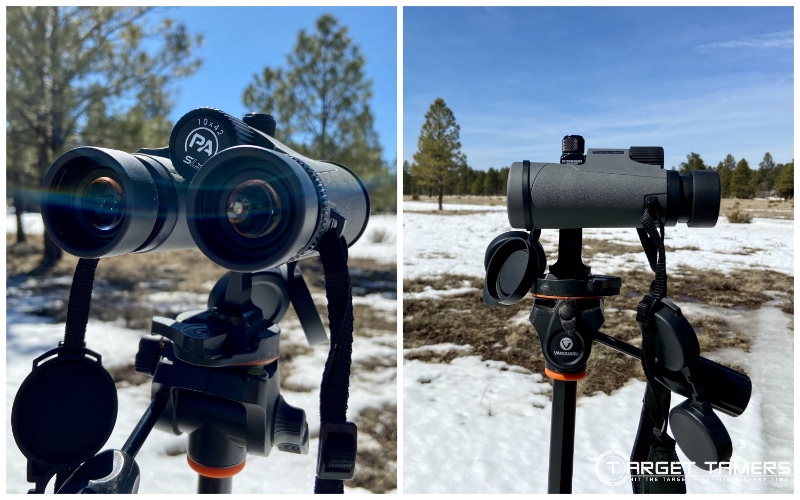
Features & Benefits
Optical Quality
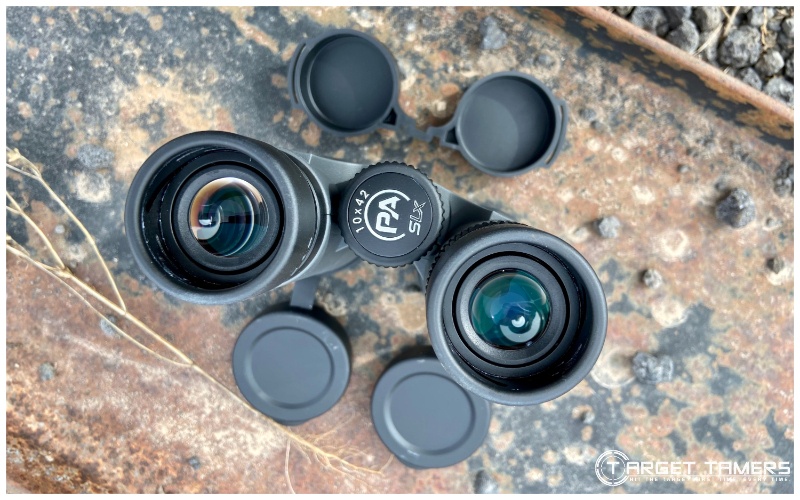
For the money and non-ED glass, the Primary Arms SLx 10x42 binoculars astound. I really didn’t have a problem with chromatic aberration (color fringing). I was expecting to have an ugly amount of it since there’s no ED glass but impressively I didn’t.
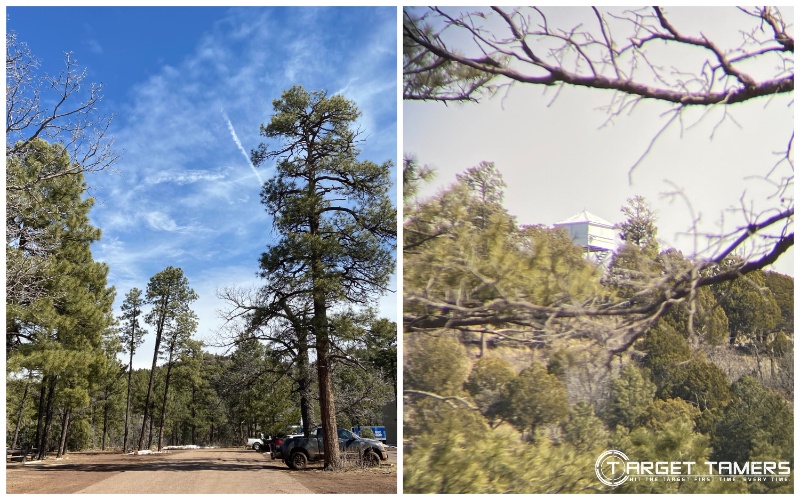
I’m happy with the color fidelity, brightness, contrast, and resolution of the PA binoculars during daylight use and even in mountain timber and brush. Every time I thought I was about to bottom out on the focusing, I didn’t and could get a touch more sharpness than I anticipated.

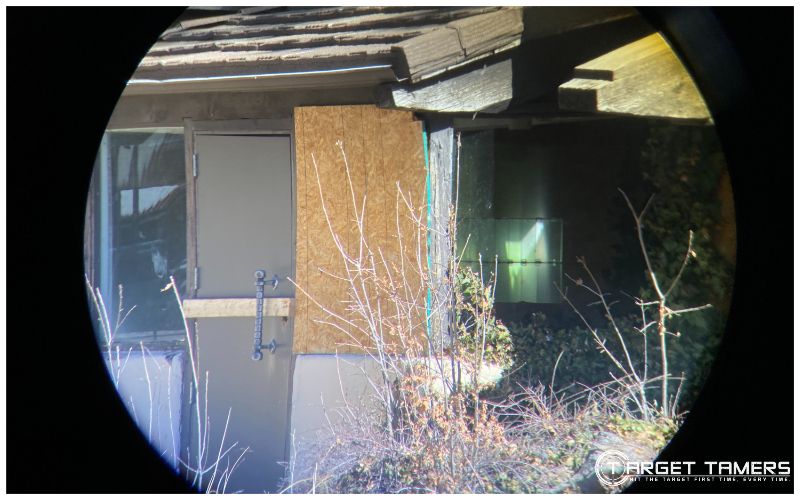
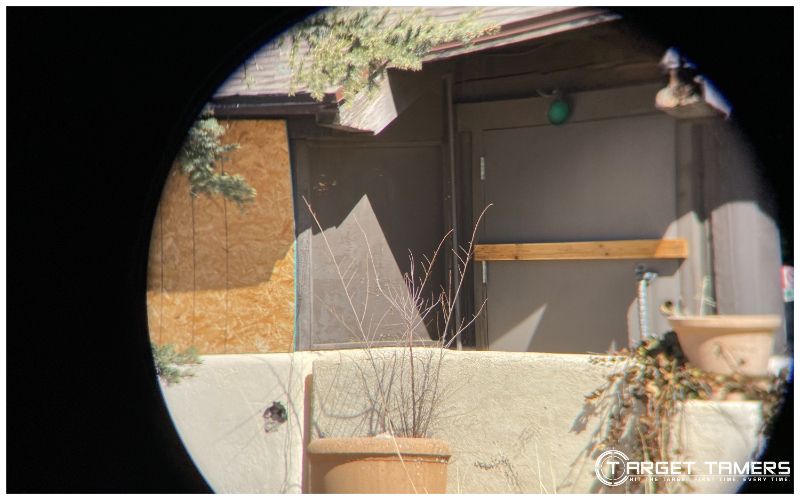
I did notice that the depth of field is somewhat shallow but perhaps largely in part due to my eyesight. It’s not nearly as terrible through the binoculars as digiscoping reveals (unavoidable optical issues related to digiscoping), but it does expose some of its off-axis softness.
Depth of focus will require a hands-on experience with the SLx binos, but nothing that interfered with my ability to scan timber, open fields, and the skies.
Build Quality
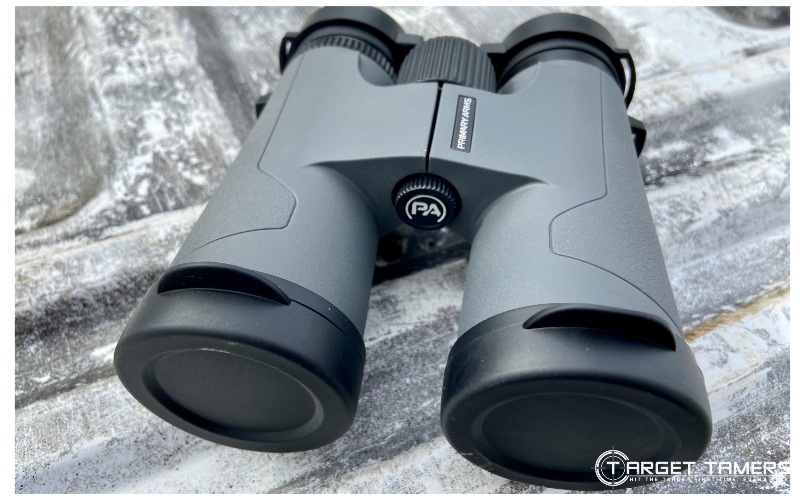
I tested the waterproofness of the Primary Arms SLx binoculars, and when PA says it’s water and fogproof, it is. I happened upon a run-off on my way home and thought it would be a good spot to give the SLx a dunk.
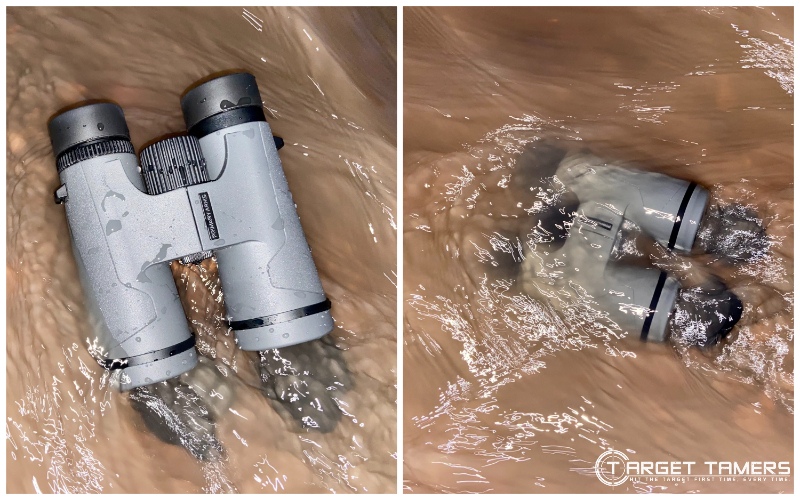
It’s around freezing temperatures outside and the water is cold. With caps off, the binoculars stayed in the water for a few minutes with a decently fast running current. Water shed immediately off the rubber armor, but some droplets stuck to the objective lens even with a few shakes.
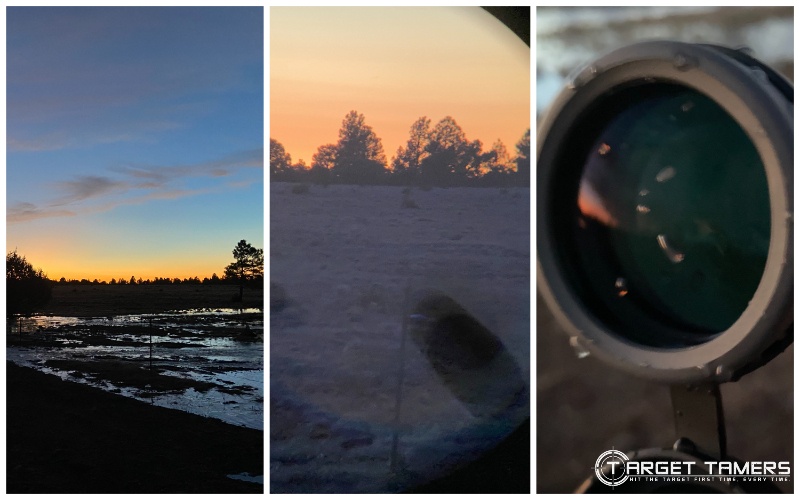
Given the temperature of the water, air, and the heat radiating from my face, I did experience a tiny smudge of external fogging on the eyepieces but there are no leaks and no internal condensation. I properly cleaned the fully multicoated lenses and have been back at it since then.
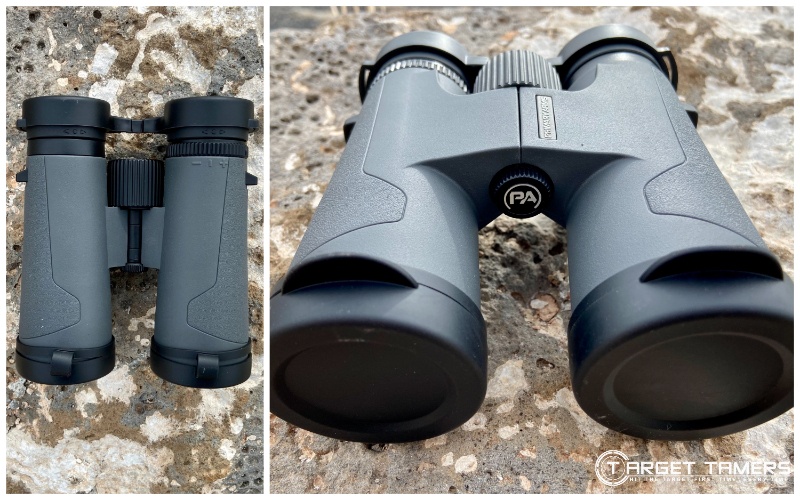
The chassis is made with fiber reinforced polymer – so plastic constructed but extremely tough and lightweight, which comes with waterproof and shockproof construction. It’s why it’s only 20.7 ounces, which is definitely within today’s standard for mid-size binoculars.
The rubber armor is smooth with barely any texturing. It’s got good scratch-resistance and fits snug around the objective bells sufficiently. I have no issues with the build.
Smooth Moving Parts
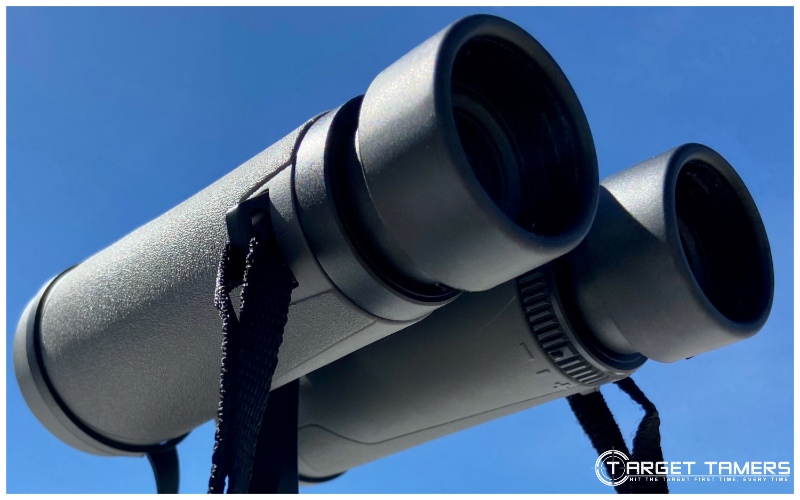
The eyecups and ocular bells are made from the same fiber polymer construction. The rubber eyecups are multi-position twist-up with a total of four positions including all the way retracted for glasses. They don’t move under pressure from the brows or eye sockets, so they’ll hold tight and steady.
Acquiring a full FOV free of vignetting with 16 mm of eye relief is good. I prefer to use it with the eyecups extended and use the diopter to adjust for my vision. It’s a non-issue for use without glasses.
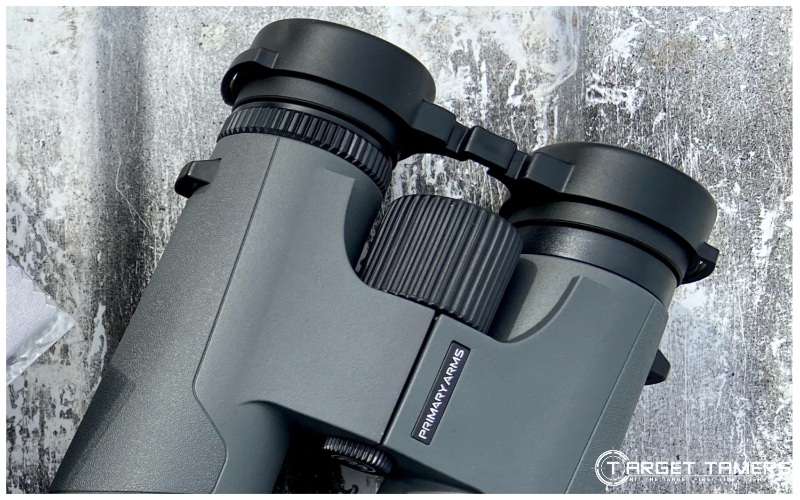
The plastic center wheel and diopter share the same linear but mild knurling. Focusing is smooth with good resistance that it’s not ‘touchy’ or finicky. I don’t easily overshoot it with the SLx binos. There is a lot of travel room, so it’s not a fast focus bino.
The diopter has good movement as in it’s not going to unintentionally go out of focus, but it’s not stiff at all. I like it since I know diopters can be very hard to move.
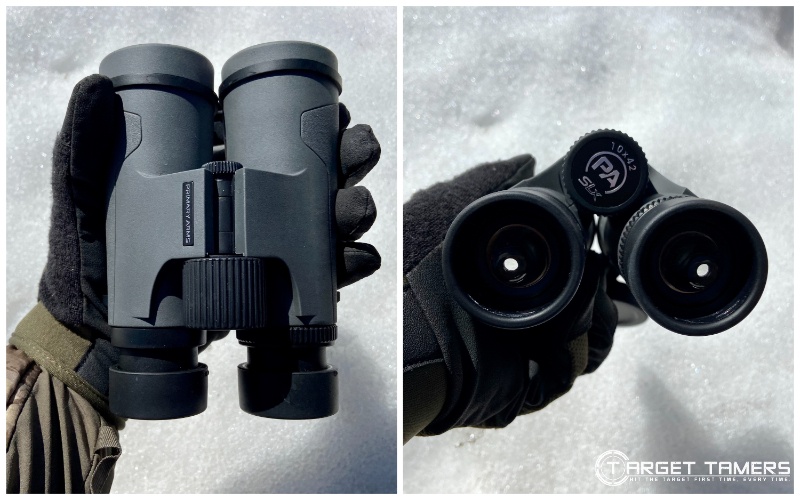
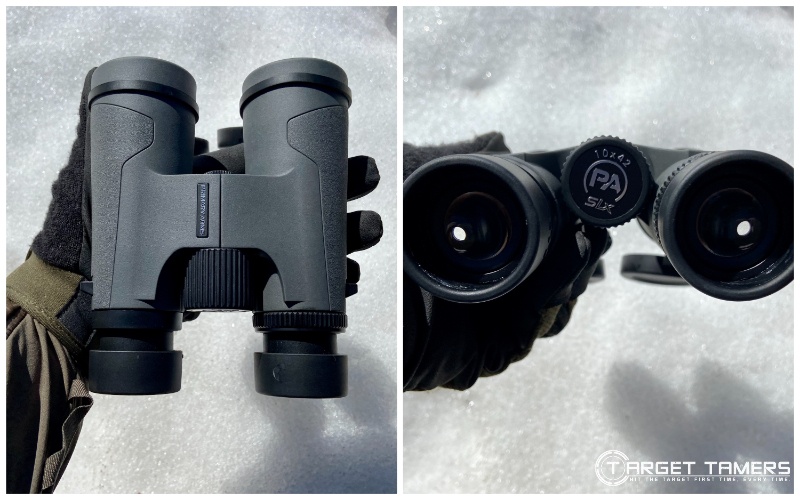
PA doesn’t list the specs for the diopter range or the IPD. I want to say that the diopter range is not as wide as I hoped it would be. I’m guessing about -2 - +2 or 3 correction.
Without a disclosed IPD range, I attempted to measure it and I’m guessing it’s about 56 or 57 mm on the narrowest end to 76 mm on the widest end. It certainly had enough for me (towards the narrow end) to have a collimated image.
Good for Birdwatching & Hunting

I recommend the SLx for most outdoor enthusiast applications. Recreational tasks like sightseeing, hiking, camping, and wildlife observation – it’s perfect for the job.
For bird watching and hunting, the shallow depth of field might be something to think about for the most critical of us, but as an amateur bird watcher and hunter, I would choose the SLx again and again if I were limited to spending under $200.
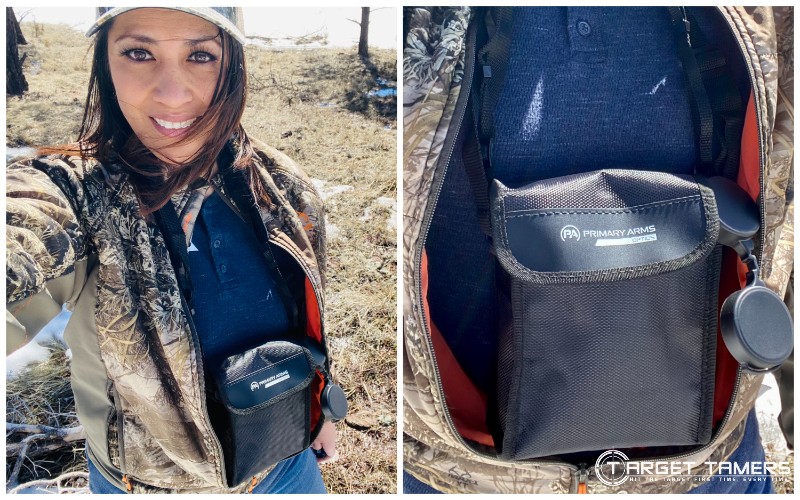
Put this way, they’re more compact than the Vortex Crossfire HD binos, cheaper than the Vortex Diamondback HDs, has better eye relief and FOV than the Leupold BX-1 McKenzie HDs and Celestron Nature DX, and have better optics and FOV than the Celestron Outland X binoculars.
For the money, it’s tough enough and has amazing optical quality. To really make the most of lowlight conditions, I think I’d take the upgrade in glass to the Primary Arms GLx model to get every detail I could to make the most of last legal light. But I'm jumping ahead, I'll get to the GLx in a minute.
Lowlight Resolution
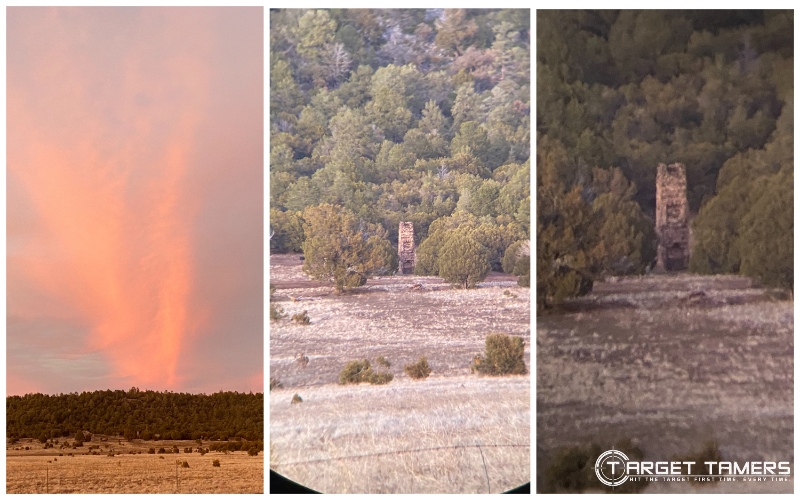
As the sun sunk lower and lowlight conditions crept in, I felt the SLx performed above average for the money. It must be thanks to the glass – yes, even non-ED glass.
I had a chance to glass out to 600 yards or so as the clock started last legal light. From the pics, you can see a chimney in the distance. The context pic makes the conditions look lighter than it actually is. But you can clearly see that the middle pic of the chimney, which is with the binocular 10x magnification, is bright and reasonably clear for the conditions.
This is quality enough to keep glassing those last few minutes to try to salvage your tag. Though this is a budget binocular, it does well for its attempt at lowlight glassing. It’s not going to compare to higher-end glass, but it’s certainly something to work with.
Hey Primary Arms! I would love to see a 12x50 binocular in the SLx optics line to complement the series. With a larger configuration, the 12s, 15s, or even 18s (56 mm) would be an excellent addition to a hunting pack for the cost-conscious buyer... just a suggestion.
Primary Arms SLx VS GLx 10x42 Binoculars
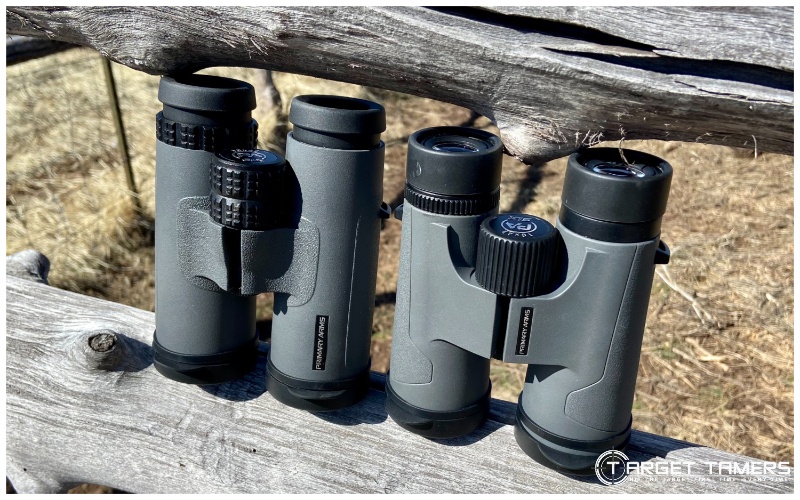
Overall, the main difference between the new Primary Arms SLx and GLx binoculars comes down to ED glass. The SLx has entry-level non-ED optics while the mid-range GLx has ED glass. Seeing as the GLx costs a little more to sit in the mid-tier category, it also boasts a magnesium chassis and a wider FOV.
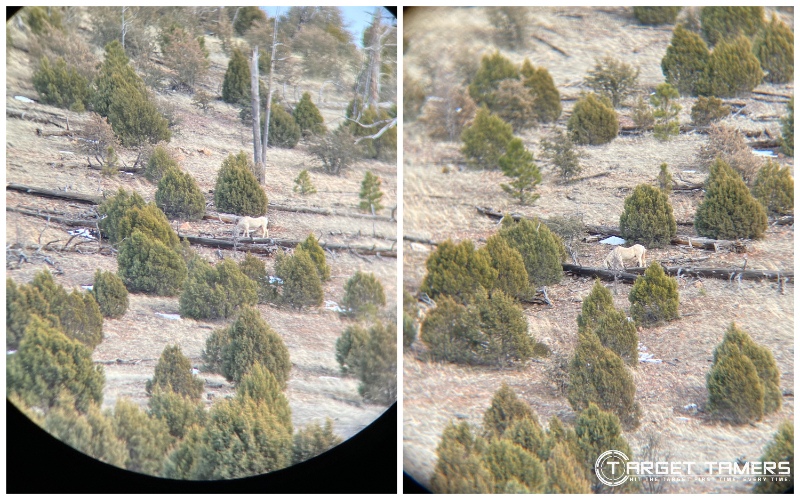
Optically, I noticed that the GLx performed sharper, clearer, and brighter than the SLx. I wouldn’t say that it has a deeper DOF (depth of field) than the SLX, but the contrast and resolution was enough of a difference to visually track an optical performance jump in the GLx.
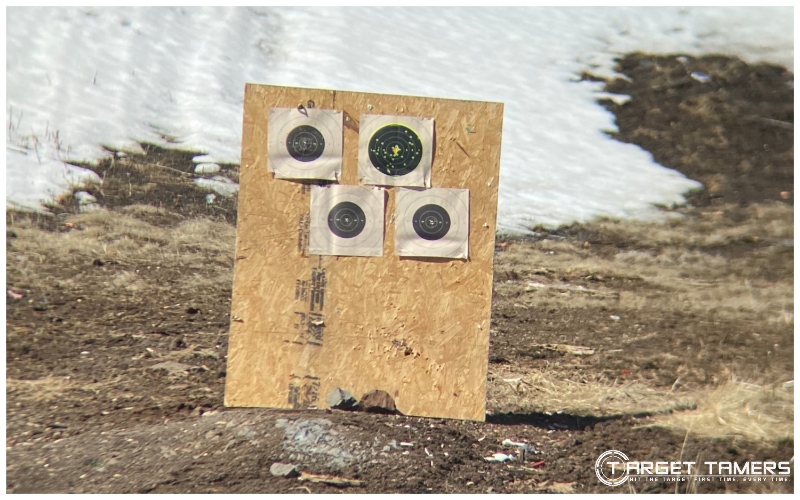
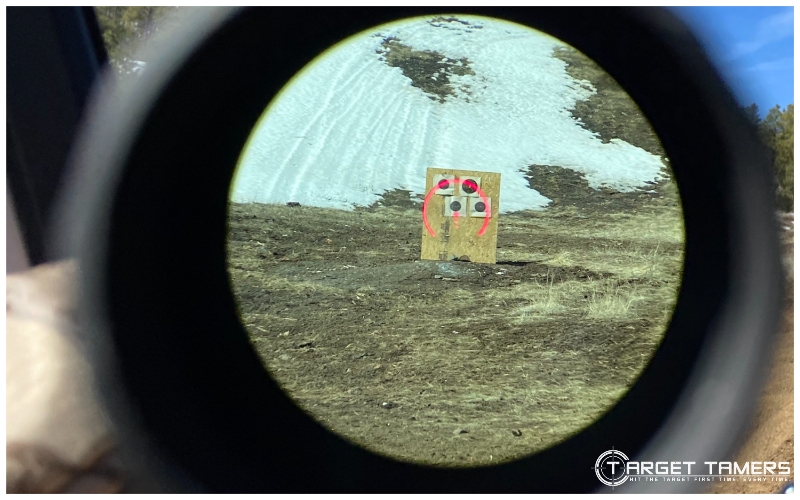
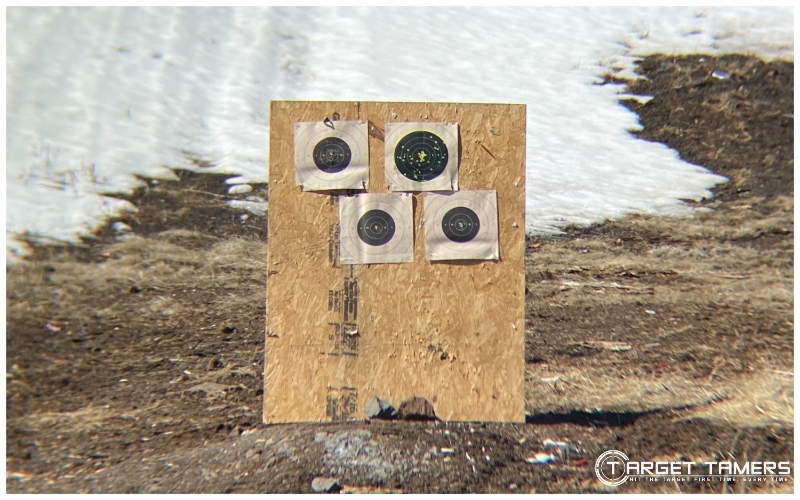
Physically, the GLx has good texturing on the armor over the bridge hinge and sides, knurlier and wider central focus knob and diopter, and sleeker, low-profile eyecups.
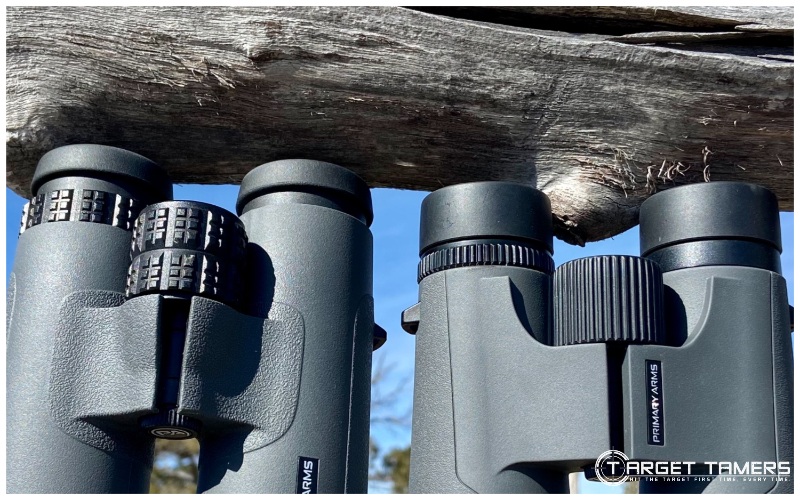
The GLx eyepieces themselves are twist-off. I don’t know if that’s on purpose, but I essentially removed the entire eye bell. Having done that, the exposed eyepiece bell is rubber armored and as far as I can tell are made from fiber reinforced polymer.
They do cost twice the price of the SLx binoculars, so if those differences hold value to you, it’s worth the jump up in cost.
Limitations of the Primary Arms SLx 10x42
Eye Relief for Glasses
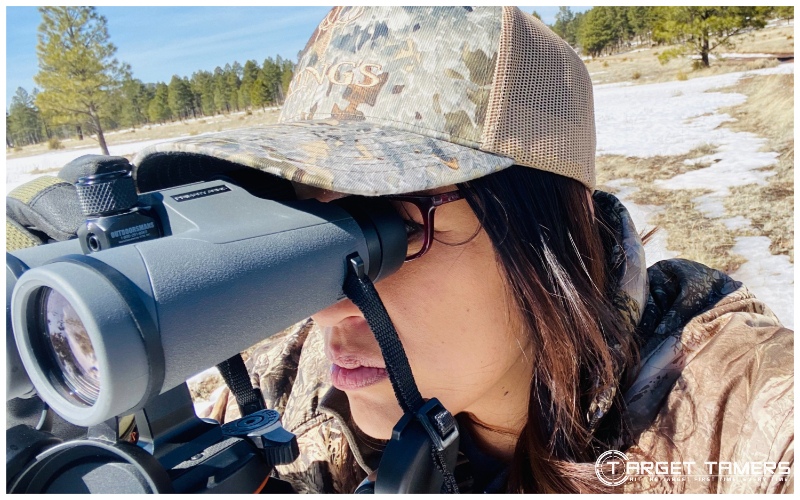
To quickly inform users, around 15 mm of eye relief is the accepted minimum for most people who wear glasses. As I wear glasses, either my corrective lenses or sunglasses, I’ve found that 15 mm is not enough and I’m much more comfortable with 18 mm and more.
Now, I don’t wear corrective lenses or glasses all the time as I usually adjust my optics with the diopter/adjustable eyepiece to correct for my vision. This is how I prefer to use the SLx binoculars.
However, for everyone else where that isn’t an option, especially considering my suspicions about a narrow diopter range, you must fully retract the eyecups.
With glasses and eyecups retracted, my frames are up against the oculars. I wear my glasses right up on the bridge of my nose, so it’s not so much a big deal for me… but it’s not comfortable with the binos butting right up against my glasses for long periods of glassing. For quick spotting I can tolerate it.
If 16 mm is usually too unforgiving for you, unfortunately you won’t find any relief with the SLx binos.
Popular Questions About the Primary Arms SLx 10x42
The Primary Arms SLx 10x42 binoculars have an extremely close focus distance of 5.9 feet. This is excellent for observing objects, wildlife, insects, etc. at an extremely close distance for magnified observation.
The Primary Arms SLx and GLx binoculars come efficiently bagged and packaged in the box. Included accessories are a rubber rainguard (one-piece eyepiece caps), tethered rubber objective lens caps, neoprene neck strap, lens cloth, manual, and soft carry case.
Image by Tina Fa'apoi (Own Work) for Target Tamers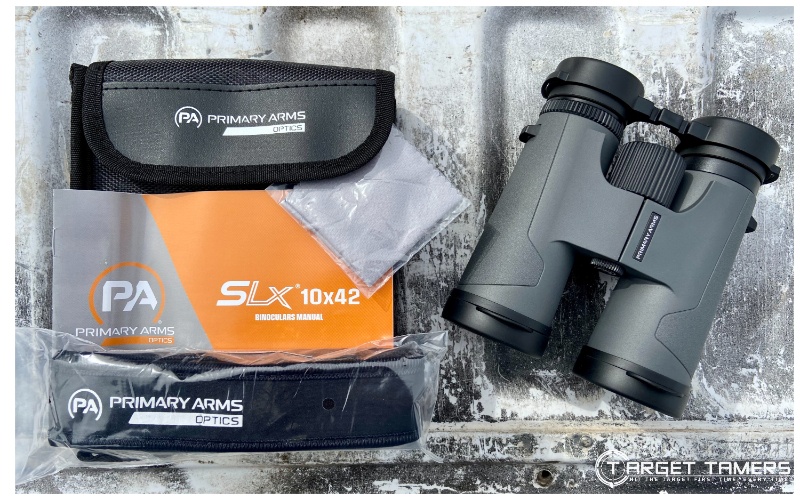
In general, neither the SLx or the GLx binoculars have an etched or printed country of origin on the binocular body. However, the box that the binoculars came in have a sticker attached to the underside of the box that states Made in China.
Image by Tina Fa'apoi (Own Work) for Target Tamers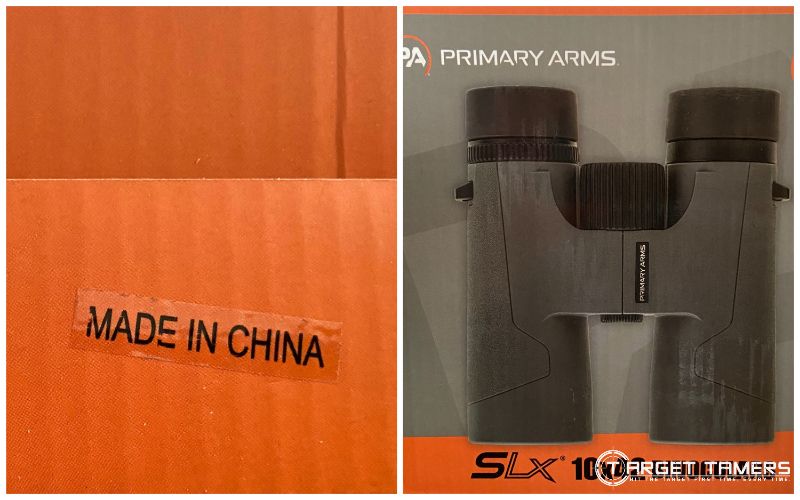
Primary Arms is a well-established optics manufacturer in their own right. From magnifiers and red dot sights to riflescopes, they’re a popular manufacturer for cost, quality, and performance.
The new binocular series will prove to be an advantageous foray for outdoorsmen on a budget looking for exceptional glass and build quality performance for the money.
Testing SLx binocular waterproofness in a run-off stream - Image by Tina Fa'apoi (Own Work) for Target Tamers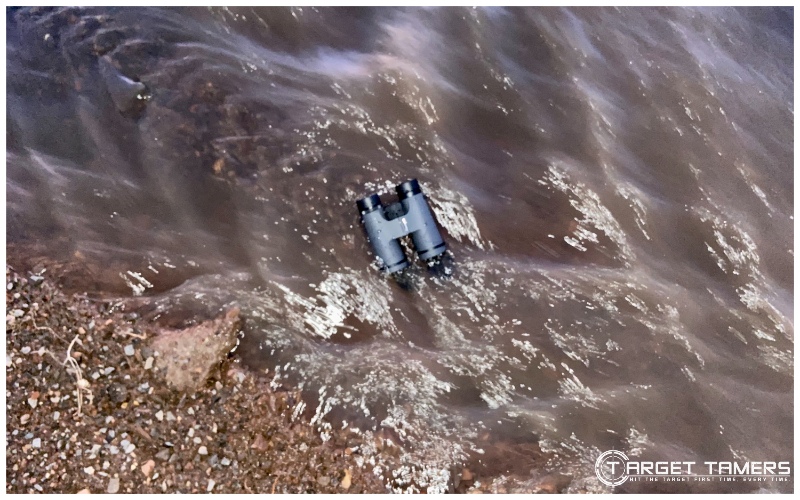
The SLx 10x42 binoculars are covered under Primary Arms Lifetime Warranty. It is fully transferable, and you do not need to provide proof of purchase from Primary Arms (Under primary arms lifetime warranty). If repair or replacement is not possible, a credit will be provided towards a new Primary Arms product.
Primary Arms SLx Binoculars: Best for the Money!
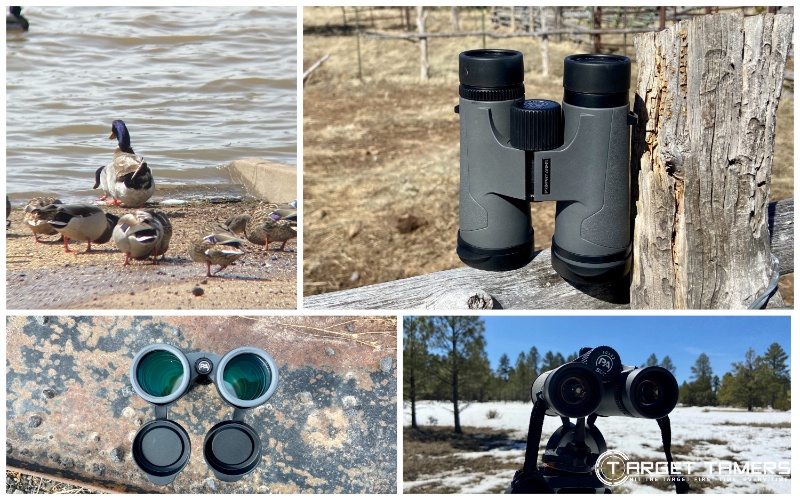
Overall, I am extremely impressed with the Primary Arms SLx 10x42mm binoculars. They are the entry-level model listed at a cost-conscious price point, and if you don’t want to spend more than $150, they have my every recommendation.
The glass does fantastically for all things recreational from bird watching to people observation and even hunting.
Though they're not the best to use with glasses, I’d be hard pressed to offer an alternative when it comes to all other performance margins for the money.
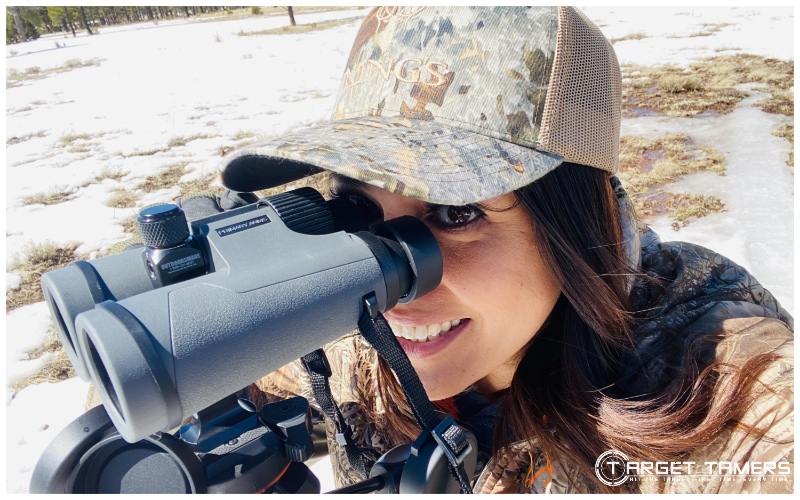
A shout-out and thanks to Primary Arms for sending me these binoculars to field test. Please note, even though this product was provided by the manufacturer, all my opinions expressed are my own and are not in any way influenced by any manufacturers.
Further Reading




From my experience all the "Entry Level" Bio. from every Maker is from China or the Philippines - - - The "Top" are from Europe, Japan or one is from America
For the most part, I agree with you. There have been some very nice mid-range optics that have come out of the Philippines though. Thanks for the comment Roger!